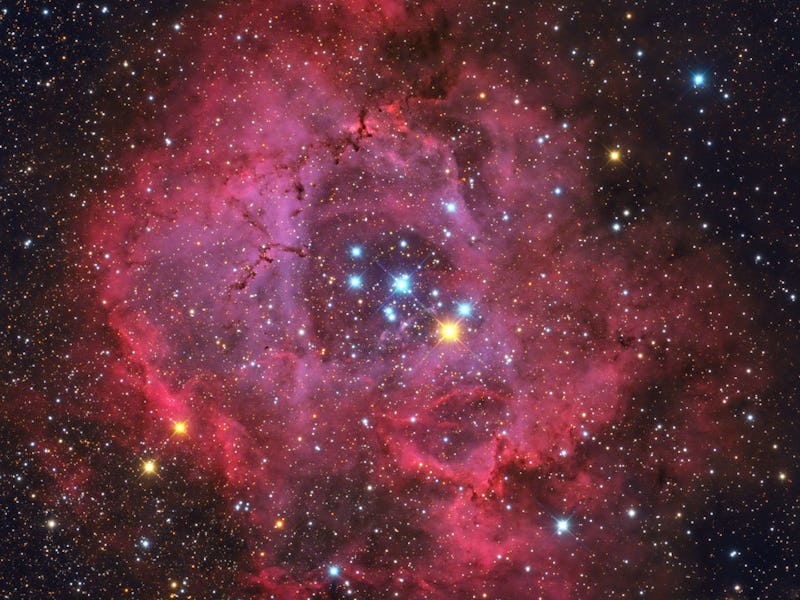
Inside this flowery nebula is a blossoming cluster of newborn stars, growing in strength and numbers over the course of four million years.
This telescopic image of the Rosette Nebula, captured and processed by Evangelos Souglakos in Athens, Greece, shows an array of pinks and purples in the shape of a flower. The nebula is categorized as NGC 2237 in astronomer John Herschel’s expansive collection of discoveries from the 1800s.
The Rosette Nebula has been forming new stars for about four million years.
The Rosette is an emissions nebula, which means it is formed by emissions of ultraviolet light from the open star cluster, called NGC 2244, in the center. It’s a symbiotic relationship of sorts between the nebula and the cluster. The nebula is the cosmic remains (dust and gas) of a burst star, which feed the newly forming stars. In return, the stars give off ultraviolet light, which ionizes atomic elements like hydrogen and carbon and feeds the beautiful, swirling nebula surrounding it. The two work in sync to stir up new stars.
The bundle of stars is called an open star cluster, which means the stars are “loose” and not bound by gravitational force. So, eventually, they will be torn apart by the tides of the galaxy and the last remains of the nebula will disperse.
The Rosette Nebula spans about 100 light-years across — that’s about 100 times the distance of our entire solar system. Anyone with a small telescope can see the nebula by looking to the constellation Monoceros, or Unicorn, about 5,000 light-years away from Earth.